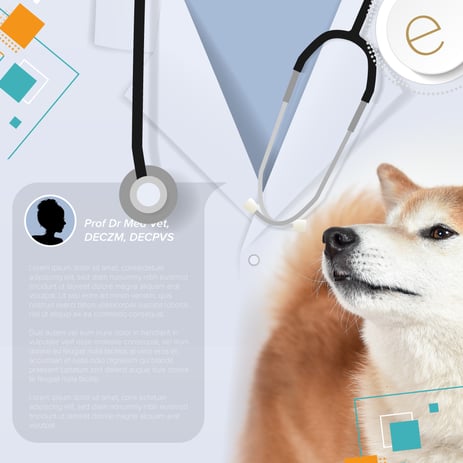Best Practices to Make Your Website More Appealing to Clients!
Your website is the first impression for new clients; so what kind of message are you sending? Are employee bios really that important? Are images helpful? How much information is too much?
These questions can be confusing alone, but don’t worry! Cheyanne and Makenzie sat down to answer a few of these questions and more!
Question: What are some things that are helping my website?
Makenzie: Items that help your website include having essential facts and information about your clinic/hospital, such as your phone number (clickable), physical location or areas served if a mobile clinic, and your hours. Include any important updates as well if your clinic is closed for holidays, inclement weather or if anything changes that are important to clients. What about special events you are sponsoring or an open house at the clinic, these can be great ways to meet new and existing clients who normally only come in when they have to.
Cheyanne: One of the biggest things I’ve seen is posting a blog that is regularly updated with information that answers commonly asked questions by pet owners (a.k.a FAQs.) I would also say reaching out to your website host who has great knowledge and understanding of SEO is essential.
Question: What are some things that are hurting my website?
Makenzie: Having an accessible website is important. Like Cheyanne will say, make sure it is easy for clients to access and adaptable to your client's needs (ability to enlarge the font or make grayscale as examples). Another way you are hurting your website is by not using it to your full potential, including not having employee bios, wasting white space, or not having separate pages for key information.
Cheyanne: Anything that hinders your visitors' ability to explore and use your website easily, such as hard-to-read font, confusing navigation, and not having a mobile-friendly interface.
Question: Are employee bios important?
Makenzie: With the introduction of many generations into pet care, being more genuine/human feeling rather than robotic/company feeling is more important than ever. Younger generations want to see the humans behind the practice and feel connected, and one way to do this is by utilizing employee bios. Include the important information like credentials and years involved in the veterinary field, but also include employees’ pet(s), their hobbies, and anything else that could include clients in the sphere of people caring for their pets. Photos of both employees and their animals are essential!
Cheyanne: They are, especially if you want to give the impression to visitors that you prioritize customer service. I think, though, that the traditional employee bios are due for an upgrade! Pet owners and clients want to know less about your educational background and vocational accomplishments and more about how you use your skills, knowledge, and experience to care for their pets. Pet owners want to know what makes your employees relatable as pet health care advocates.

Question: Images on my website?
Check out our next blog for more on this!
Makenzie: We dive deeper into this topic on the next blog so be sure to come back for that update! But yes, you need to include photos on your website. Get creative! Include employees, pets (with permission from owners), and your clinic both inside and out.
Cheyanne: Yes! The more visually appealing you can make your website, the better! However, having the right person to create a balance between images and text is essential!
Question: How much information is too much?
Makenzie: Look at it this way: take a subject you are not knowledgeable about but often interact with and include what you want to know or potentially know about that company. Okay, now imagine you need to go to a website dedicated to this subject. What would you want on there? Probably wording that is simplified for most people to understand, maybe some images to help clear up complex subjects, and FAQs/contact information. This is exactly how you should think of your website for your clients not involved in the veterinary field. How would they read this information? Is it too much? Maybe asking friends/family not involved in this field to read over the text and see if it is understandable. Be concise and clear on your information and make sure it is easy to contact you with any questions they may have.
Cheyanne: It really depends on the subject matter. If you are talking about your services and all the amazing equipment your hospital has and provides, I would say keep that to a minimum. On the other hand, if you are talking about educational information in a blog or providing FAQs about a surgery procedure, you can share a little bit more. If you feel like you are writing a novel, you are probably providing too much information. Step into your typical pet owner’s shoes and ask yourself, “Would I read this entire article or section?” If the answer is no, see how you can shorten it while still providing valuable information.
Question: What information should I include on my website?
Makenzie: Going back to that analogy of before, put yourself in the client's shoes and say what would I want to see? Probably information on how to contact the practice, any important information that would pertain to you as the client, and FAQs that may answer any questions you have. Unique to veterinary medicine: including a form to fill out for new clients, a way to make appointments online, and a way to contact you.
Cheyanne: I suggest anything that will make it simple for your client or potential clients to do business with you! This would include pages of services you offer like: Client Education handouts, Online forms, an appointment request page, and even a prescription request page. Contact information is not just limited to a phone number, but a way to email the practice, social media links if you have them, and the location of your clinic.
Question: Does my website have to be mobile-friendly?
Makenzie: Yes. Yes. YES!!! More and more younger people are becoming pet parents and it is necessary to adapt to this mobile-friendly generation. Don’t get left in the dust with this, work on your website with your website builder or contact eVetSites on how your website is mobile-friendly and a team member would be happy to talk to you!
Cheyanne: YES! Around 50% of website traffic comes from users on mobile devices. This includes cell phones and tablets.



